By: Tom Fischer, Interpretive Ranger at Monadnock State Park
Working on Mount Monadnock over the past month has been an amazing experience. Among all the great aspects of my job (an Interpretive Ranger from the Student Conservation Association) —hiking while I’m on the clock, being outside all day, and having one of the best lunch break views in New Hampshire—my favorite has been interacting with the people who come to climb Monadnock.
There are some who climb it with friends, others who bring their whole family, and still others who use it as an opportunity to get 3,000 feet of elevation between themselves and their friends and family. All types are welcome on the mountain and help enrich the strong sense of community Monadnock gives the surrounding area.
I have also witnessed some very eager members of this community attempt to climb the mountain without proper preparation. This is not for any lack of intelligence on their part, simply a lack of information. Unfortunately, this lack of information can lead to injury, trauma, and illness on the part of the climber.
I write the following blog post to help patch up the largest information gaps I come across, and hope it helps everyone have a more enjoyable experience on the mountain. This post is divided into two sections, one is about common missing inputs, the other is about common missing outputs. By the end we’ll see the four items you can bring to Monadnock to help ensure you have a safe and enjoyable trip.
Inputs
“Water water everywhere, nor any drop to drink.” This is what Samuel Coleridge would almost certainly not be saying at the top of Mount Monadnock, which, being a non-glaciated mountain, has an unsurprising lack of potable water at the top.
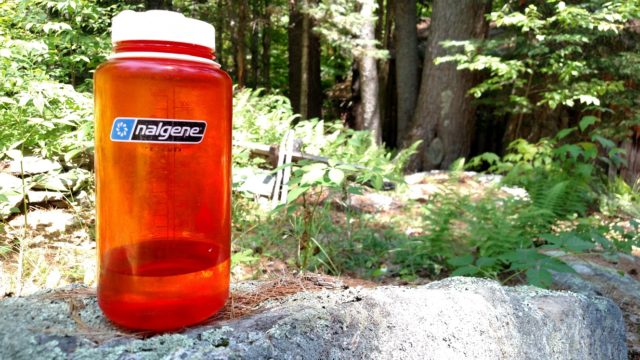
Unsurprising to most, that is. In the last three weeks I have witnessed many a brave adventurer, seemingly in full rebellion against the fundamental building block of life, attempting to ascend the mountain with no water at all. I can imagine their personal readiness checklist looking something like this:
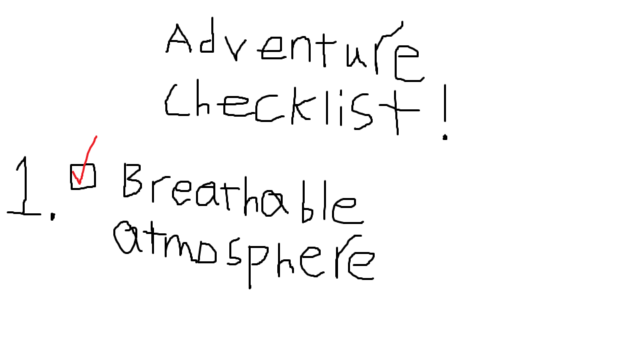 While this may be the logical conclusion of ultra-light backpacking, I don’t think it is enough, on average, to get you safely up and down the mountain. A lack of water will lead to heat exhaustion and dehydration, which symptoms include loss of fine motor skills, impaired decision making, and fatigue. When you add steeply graded vertical slabs of rock to this equation you can see why dehydration can quickly lead to falling and injury.
While this may be the logical conclusion of ultra-light backpacking, I don’t think it is enough, on average, to get you safely up and down the mountain. A lack of water will lead to heat exhaustion and dehydration, which symptoms include loss of fine motor skills, impaired decision making, and fatigue. When you add steeply graded vertical slabs of rock to this equation you can see why dehydration can quickly lead to falling and injury.
To counter this, we recommend bringing at least 2 liters of water per person to climb Mount Monadnock. For the die-hard imperial system folks: that’s about 64 oz. And for the people who don’t like either system: that’s about two standard size Nalgene bottles. This is generally enough water to get you safely through the climb.
The second input is a little something I like to call food. Food is so delicious and good for you that most humans prefer to consume it daily. While I wouldn’t put it in the same category of importance for Monadnock as water, bringing some kind of food to keep your blood sugar up is a very good idea. Hunger and a drop-in blood sugar can lead to a lot of the same symptoms touched on in the dehydration section, which can also make you more prone to injury.
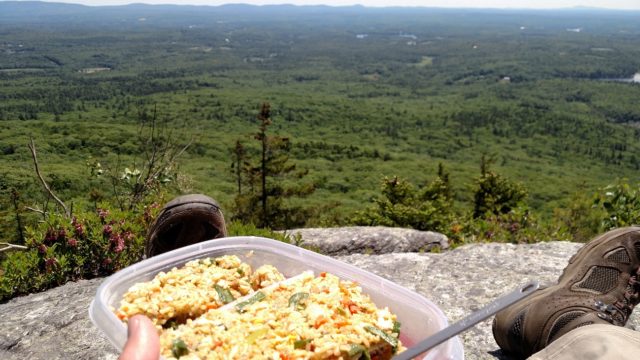
Due to dietary preferences I won’t make any recommendations about what food to bring, except to say I think it should have some carbs in it. If you’re ketogenic, perhaps a single saltine and a jar of peanut butter will do.
Now that we’ve had an overview of the two main inputs to bring on your climb in order to stay safe, let’s review the outputs.
Outputs
It’s not what you think.
Outputs is what you do with the energy that your supply of food and water give you. If you mismanage your outputs, your inputs can become inadequate.
For example, last week I was descending down the White Dot trail when I encountered someone asking where he could find the Dublin trail. It turned out that he had climbed up the Dublin trail, gotten lost, and hiked all the way down to the upper junction of the White Dot and the White Cross before realizing his mistake. This is on the other side of the mountain. To get back onto the Dublin trail he had to re-summit Monadnock and descend it again on the other side.
Despite having managed his inputs well–he had a bag with food and water–a navigational error caused him to mismanage his outputs. Having not anticipated the extra mileage and vertical ascent he had to endure due to getting lost, his inputs became slightly inadequate for the trip.
In a round about way I guess I’m saying BRING A MAP! It is a certified ultralight and free addition to your climbing gear that will help ensure that the trip you planned for is the one you’ll be taking.
The other important tool to help you manage your outputs is a good pair of shoes.
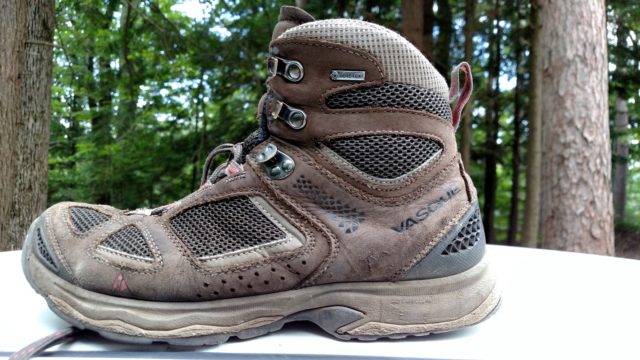
Without good traction, you are going to be putting in twice as much work as everyone else to ascend and descend the mountain. I have been called a “human mountain goat” by a pair of climbers descending the mountain because of how easily I was navigating the terrain. After looking at their feet, I am positive that I can attribute this almost entirely to the fact that I had Vibram soles (sponsorship?) and they were wearing flip flops.
In conclusion, if you make sure you are managing your inputs and outputs with these four simple items (water, food, a map, and the right footwear) you will be well on your way to making sure you have a safe and enjoyable day on Mount Monadnock. While this isn’t an exhaustive list of items you should bring (sunscreen, rain gear, compass, sunglasses, first aid kit…), I think it is the bare minimum everyone should have when they arrive at the park. Thanks for reading, and I hope to see you on the mountain soon.

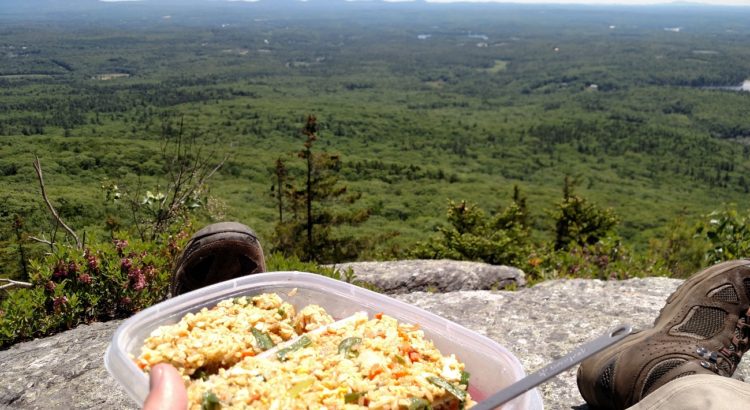
For my bare minimum list I’d add a light (headland or flashlight) and a few pieces of extra clothing to go along with your food and water. I was on Monadnock a few weeks. We didn’t need lights, but a few of us put on warm hats, and one put on gloves. You probably right, not as important as water, but boy food always tastes better while hiking. Fun post, Thanks!
Recently I climbed the White Arrow. It had been several years since I had done any hiking. I’m 70, obese and bull headed. The night before my hike I purchased a hike safe card just in case I ran into trouble. I realize the card is no guaranty, but along with my 8 bottles of water it added a tiny bit more security. As usual, I met some really great people on the trail and at the summit. I had brought a Jeanott’s Italian sub with me as well as twizlers, potato chips (they were really crushed) and two reese’s cups. After I spent an hour and a half on the summit I got up to go. Well, sort of kind of. I had stiffened up and my leg muscles were not working. After I rubbed out the cramps I started back down. Half way down there was a spot where I felt like a big magnet was pulling me sideways. I got a little scared. Not sure if I was experiencing some kind of stroke. I sat down on a rock and took off my pack and drank some more water. I was OK. Once I got to the Half Way House I just meandered along the Old Halfway House Trail back to the parking lot. For two weeks I was expecting stiffness. Nothing. Then it hit me. As if my legs had been crushed by a boulder. I went to the doctor. He said sciatica. Two months later, I’m still not walking upright. But I will. And I am looking forward to Cardigan in a few weeks. I am glad I did the hike. I pushed myself, and wanted to quit. It’s difficult to turn back when you should and I knew that sandwich would taste better at the summit!
We hiked to the top on a beautiful day last October. Even though it was warm at the bottom, it was very cold up top. The puddles were still frozen at midday. I was glad that my husband Grabbed a hat out of the car. Always check out the weather board at the bottom before leaving the parking lot!
This is awesome. Well done!
I really enjoyed this post! A frequent hiker to the ‘Nock myself, I definitely advocate the map piece. Particularly on the south side, there are a surprising number of trails/junctions, and I still use a map to make sure I’m pointed in the right direction. If you prefer digital maps/apps, check out ones that support Caltopo and Thunderforest – they list all the Monadnock trails.
And on the food input, I recently went against my mother’s sage advice (low sodium!) and started packing salty snacks on hikes, particularly in warmer weather where you’re going to be sweating a lot. Your body loses a lot of salt/potassium/electrolytes through perspiration, so having a way to replenish those “inputs” seems to help with reducing soreness, for me anyways. I also use a hydration supplement that contains electrolytes.